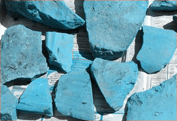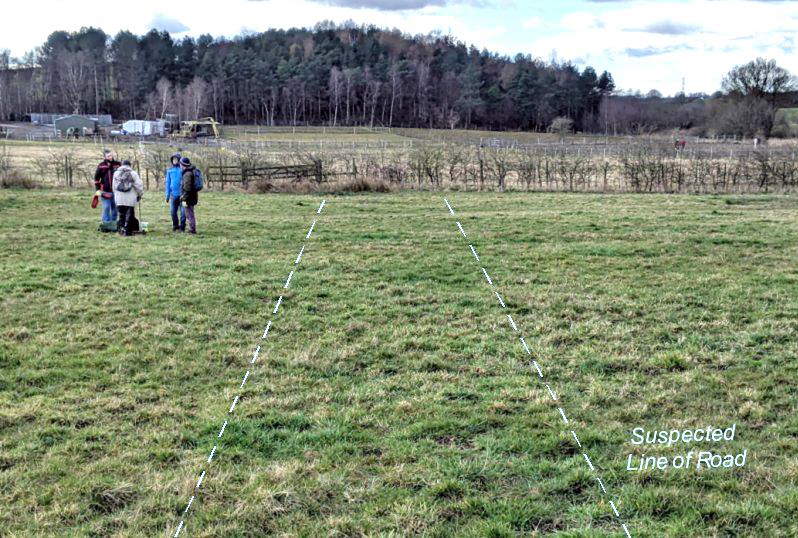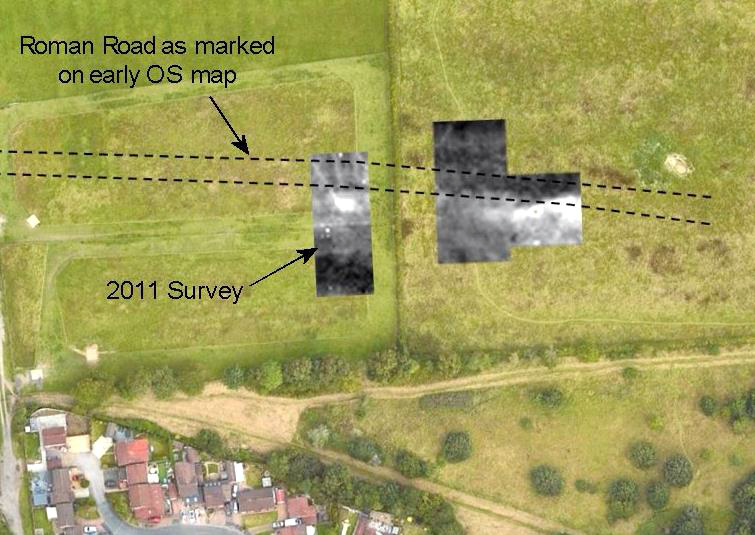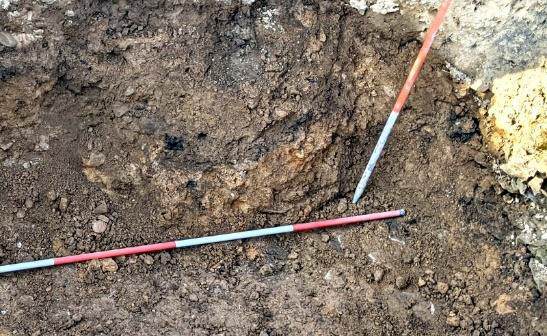

| No.277 April 2025 | Monthly Newsletter |
Cleworth Hall Success |
|
Our February Newsletter (Newsletter 275) mentioned last year that Jim Meehan had been asked to research areas to the north and east of Cleworth Hall, this being Lancashire Wildlife Trust's newly acquired Nature Reserve. These fields are of particular interest to us because, as mentioned in our last year's Newsletter (Newsletter 266), we have been investigating the possibility of the Roman road from Manchester to Wigan, passing through them. Last month Jim got permission for us to carry out a resistivity survey in the field immediately to the east of our previous work in 2011 (see Newsletter 142 and Newsletter 149). Last month, at short notice on a wet and windy afternoon we were able to muster a small team to carry out the survey. As you can see the result is quite significant. In 2011 we did get a positive reading from our scan, but the result was not strong enough for us to be certain it was the road. This result however, which seems to be on an alignment with our previous result (and not far from the 1849 OS map marking), gives us great confidence that this is in fact the road. Jim's research has revealed that this field is referred to as Rough Field on the early tithe map. In the 19th century antiquarian Rev. Sibson described the road here as being made of "large pieces of white freestone covered with gravel". If our result is showing the road, it would make for a great excavation. Getting permission to dig though, will be another matter as the land, now being owned by the LWT, will naturally have restrictions on its use. However there is a chance as we have worked with them before on their Kirkless site in Higher Ince, so fingers crossed (more details on our blog site here). Aspull RestartMaybe its thanks to climate change but April's weather forecast is looking pretty promising, so we will be starting back on our Aspull Ring Ditch Project this week (volunteers have already been informed). In fact, last week a small team visited the site to remove the covers and inspect it for damage over winter. Everything looks fine and we are currently working on a programme of excavations for the coming months. This will include lifting the two urns and removing the rest of the cremated remains that have been discovered so far. These remains will need to be analysed and John Trippier has already been in touch with osteologists who may be able to help with this. It will however be at a cost, and it is likely that we will need external funding for this. Another priority will be investigating what we think is the remains a possible cist burial. It lies under the sandy clay mound and therefore must be the oldest feature so far found. As reported in our September Newsletter (Newsletter 272) it was shown to have a cavity which, at the time, was immediately covered so that any dating remains would be protected. We also have other areas to look at, especially where there might be more burials and this will need more topsoil removal. Whilst on site last week we took the opportunity to clean out trench one which had suffered another collapse. This revealed a significant charcoal rich layer which had only been hinted at before. Next MeetingWednesday 2nd April - at the Real Crafty on Upper Dicconson Street starting at 7.30pm as usual. This month we will be joined by Steve Milne, who is an independent archaeologist from Tameside. Since 2021 Steve has been excavating a place called Luzley, near Mossley, on the east side of Manchester. The site includes a Bronze Age cairn and in 2022, a collared urn turned up. It was lifted the following year and its contents have now been analysed. Steve will be reporting on this, as well as other features from this multi-period site. We have much to learn from his findings and research with regard to our work at Aspull. Hope to see you there - BA. |


